From riches to rags, then death: the mystery of Gippsland’s Lady of the Swamp Margaret Clement and the footballer suspected of her murder
SHE was a belle of Melbourne society, held some of the best parties, travelled the world and was even invited to Buckingham Palace. But its still a mystery how stinking rich ‘Swamp Lady’ socialite Margaret Clement died.
Our Criminal History
Don't miss out on the headlines from Our Criminal History. Followed categories will be added to My News.
SHE was a belle of Melbourne society.
She held some of the best society parties, travelled the world, was invited to Buckingham Palace and was stinking rich.
And then one day it was all gone.
Margaret Clement’s lifestyle of gleaming carriages and fancy garden parties gave way to a life of squalor.
TAX MAN TELLS FINKS BOSS YOU OWE US, BIG TIME
ROGERSON QUIZZED OVER WHISKEY AU GO GO FIRE
DAWSON’S LOVER ‘SCARED’ AFTER WIFE VANISHED

The 17-room Gippsland mansion she shared with her sister fell into disrepair and became increasingly surrounded by swamp waters.
Dressed in an old coat with a fur collar, Ms Clement was forced to wade waist-deep through the murky water to the nearest town 11km away for supplies and to send letters to her family begging for money.
The refined gentlewoman became known as the Lady of the Swamp.
Once a jewel of Gippsland, the sisters’ mansion Tullaree became overrun with cats, rats and snakes.
And then one day in May, 1952, Margaret Clement was gone too. Vanished. Never to be seen again.
Did she simply fall victim to the murky floodwaters surrounding her derelict homestead and
get washed out to sea? Was she murdered? And, if she was murdered, who was the killer?
It has become one of Australia’s greatest unsolved mysteries and a source of local legend.
Sixty-two years later, the police file remains open but inactive.
Extensive searches by police and 200 volunteers failed to find any trace of the Swamp Lady.
Initially, it was thought Ms Clement had slipped and drowned, but when her walking stick —
which she took everywhere — was found back at the house, suspicion centred on a neighbour,
former Footscray footballer Stanley Livingstone.
Police questioned the Livingstones closely about Ms Clement.
Stanley Livingstone accused Margaret’s nephew, Clement Carnaghan, of foul play.
He in turn accused the Livingstones.
Not even a coronial inquiry in 1980 could solve the baffling case.
Police had believed bones found in November, 1978, were those of Ms Clement.
Expert opinion differed.
Professor John Clement maintains that they were the bones of an elderly Aboriginal woman.
Born on March 8, 1881, Margaret Clement lived a life of Victorian opulence.
Her father Peter had migrated from Scotland in search of gold.
Failing to strike it rich in Ballarat, he turned his hand to delivering groceries to goldfields in Gippsland.
According to Richard Shears in his book Swamp: Who killed Margaret Clement?, he got a tip to buy shares in the Long Tunnel Mine and struck deals with people who had not settled their accounts to pay with their shares. He became rich.

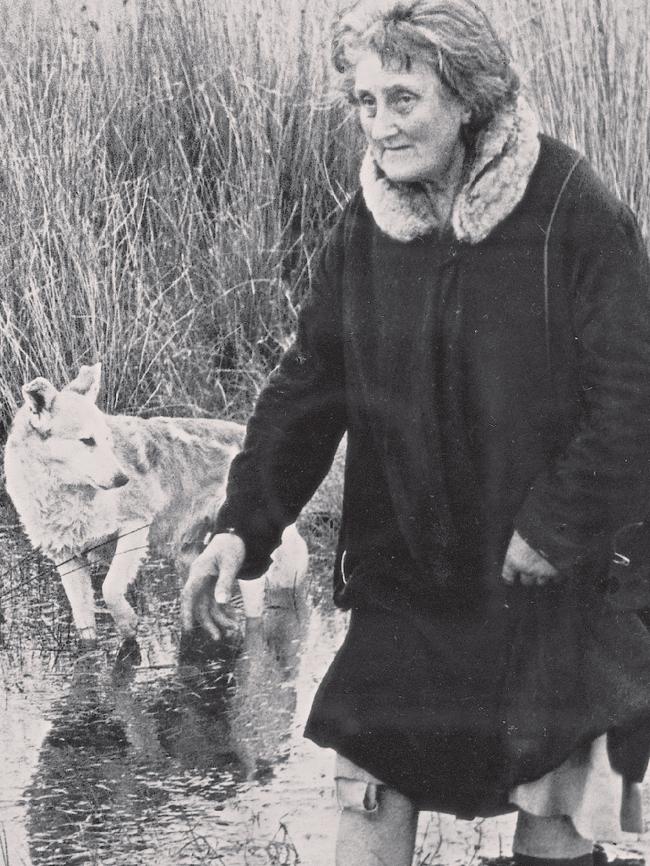
AN EXTRACT FROM SWAMP: WHO MURDERED MARGARET CLEMENT
Ms Clement, her three sisters and two brothers were born into wealth.
The girls went to Methodist Ladies’ College while their brothers attended Scotch.
Ms Clement and sister Jeanie bought Tullaree in 1907 with the proceeds from their father’s will.
In his history of Tarwin Lower, researcher J.R. Charles wrote: “It is said the Clement girls did not know the common people.
“They attended garden parties and entertained people in high places both in Melbourne and on their property.
“When going out, a liveryman rode ahead of the buggy and opened and closed gates.”
Their brother, Peter, managed the property and no expense was spared by the sisters, who employed a household of two cooks, three maids, two manservants, a butler, a groom and two gardeners.
They were social butterflies, travelling the world and purchasing expensive furnishings for Tullaree, where they were Edwardian society hostesses to lavish gatherings, serving gourmet food to guests from Melbourne.
A letter from Margaret to her brothers said they had been to Buckingham Palace and were presented at court to King Edward VII and Queen Alexandra, according to Richard Shears’ book Swamp - Who Killed Margaret Clement?
The women knew little about running of the farm.
In Peter’s absence, unscrupulous farm managers began selling off the good cattle and replacing them with inferior stock.
Rustlers moved in and broke down fences.
As Shears says in his book, word got out that the Clement sisters were ripe for the picking. The once glorious pastures which had once been kept in check by prime cattle were let go and the drainage was neglected.
But still the sisters maintained their extravagant lifestyle.
Shears wrote that the first sign of the sudden fall in their wealth came with a bank statement in 1916.
They were seriously in debt, their staff had to be sacked and the paddocks were flooding. Their world fell apart.
The sisters sold off some of the land and took out several mortgages over the years.
One of the mortgage holders was Melbourne solicitor and sporting identity Ross Grey-Smith. Mr Grey-Smith paid about $27,000 for the mortgage, but Margaret Clement retained a caveat that prevented transfer of the title without her approval. The sisters waged a long-running legal battle over the mortgage, determined not to let Tullaree go.
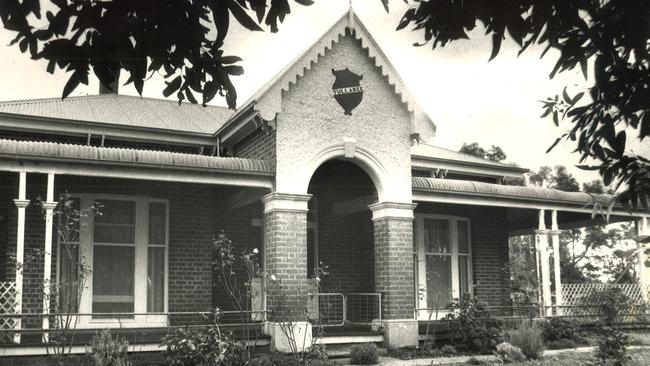
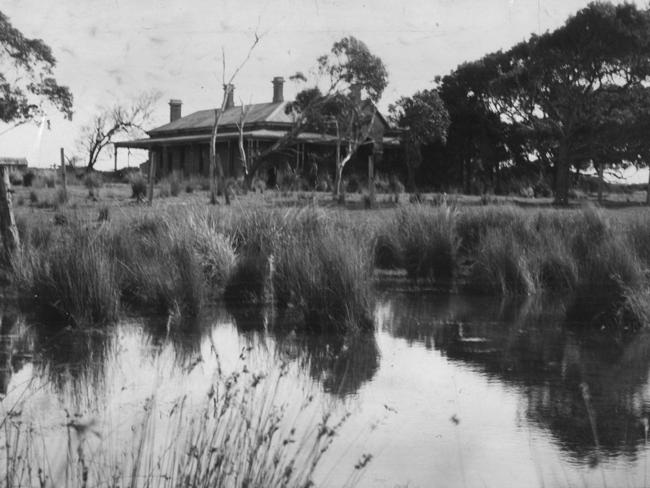
Jeanie and Margaret continued to live in the house as recluses.
The roof leaked, windows were smashed and the house was surrounded by swamp.
The sisters had no choice but to wear their finery until it became tattered and patched.
The garden, once the best in the region, became buried in blackberry scrub as high as the house in some parts. The scrub even entered in through the broken windows.
Up to three times a week Margaret trudged into the nearest town, Buffalo, where she would get her supplies.
When Jeanie died in 1950, an undertaker and his three assistants had to wade through 1km of waist-high swamp water to get to the mansion and then another 1km to carry her body out by stretcher.
And Margaret gained some notoriety, with media making the arduous journey out to Tullaree to interview the Lady of the Swamp.
“I will stay in my house with my books and my dog for the rest of my life,” Ms Clement told a reporter, who waded through the “icy, rank” water to interview her.
“We were happy in our loneliness. We bothered nobody and nobody bothered us.
“I am alone now, except for my dog Dingo.”
She said she planned to live out her days reading detective thrillers.
“Maybe I will be lonely now my sister is done, I have no regrets and no fears,” she told another journalist.
A Buffalo policeman tried to persuade Margaret to leave Tullaree after Jeanne’s death but the old lady refused.
“A person has but one life and I am living and enjoying mine,’ she reportedly said. “It is the way I want to live. Whether other people agree with it or not doesn’t matter.”
Ms Clement continued to live alone in the decaying home without gas, electricity or even proper tank water.
When her sister died, neighbour Esme Livingstone befriended the eccentric woman.
Her husband was Stanley Livingstone, a former Footscray and Melbourne footballer.
Esme and Ms Clement would visit together and take shopping trips. Ms Clement even stayed overnight with the Livingstones.
In a will made in 1925, Ms Clement had bequeathed Tullaree to her nephew Clement Carnaghan and three nieces.
It was not long before Ms Clement had disinherited her nephew.
And, in a move which shocked Ms Clement’s family, Mr Livingstone took over the mortgage on Tullaree in 1951 for $25,000 and convinced the ageing woman to waive the caveat for $6000.
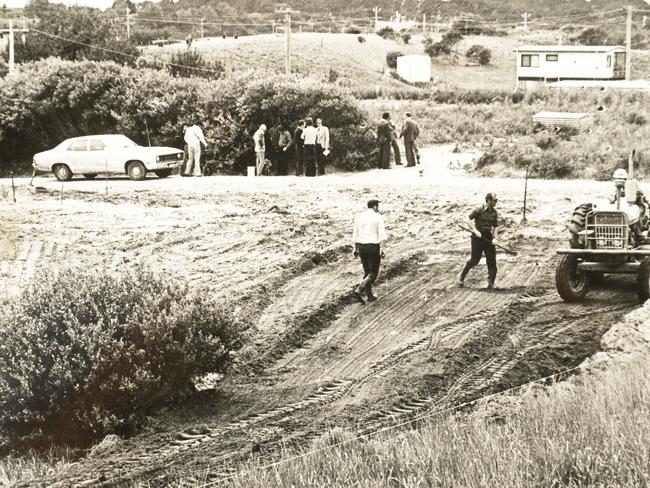
In exchange, he was to build her a small cottage on the property.
The cottage was being built when Ms Clement, 71, disappeared during a particularly wet and wild period. She was last seen alive on May 21, 1952 — a week after her dog had been found with its throat slit.
In the days after the disappearance, Mr Carnaghan told The Herald he believed his aunt had been murdered. The Livingstones similarly told The Sun that they believed their neighbour had been killed or was being held captive.
Her walking stick was found at the dilapidated mansion and her bed had not been slept in.
Police, volunteers and blacktrackers searched through waist-high swamp-water looking for Ms Clement.
They found nothing and the speculation continued.
There were stories that stolen gold buried on the property before Ms Clement bought it was behind her disappearance.
Mr Carnaghan went to court to contest his aunt’s will, claiming that she was not of a sound mental state and was under undue from the Livingstones. The claim was rejected.
Then in 1978 skeletal remains were discovered 4km from Tullaree at Venus Bay.
Eight months later, a couple found a 1940s-style handbag, a decaying lace shawl and coins predating Ms Clement’s disappearance.
A coronial inquiry was announced.
Det-Sen-Sgt Bill Townsend, who headed the investigation from 1978, told former Herald Sun reporter Russell Robinson in 2007 that he believed Mr Livingstone, who raised the alarm about the missing pauper, murdered Margaret Clement in a fit of rage.
Mr Livingstone was renowned for his feats of strength.
“He had everything to gain from her being off the scene. He wanted her house,” Sen-Sgt Townsend said.
“Just look at the type of man he was — rough and very violent.”
Four people who came forward independently and told of separate conversations with Esme Livingstone in which she told of her suspicion that her husband had killed Margaret Clement.
In a statement to coroner Kevin Mason, Yarra Glen woman Jean Sharp said she had become friends with Mrs Livingstone in 1971.
“One day Esme came to see me. I could see she had been drinking, and she said something similar to: ‘Stan’s going to get rid of me and I don’t know what to do’,” Ms Sharp said.
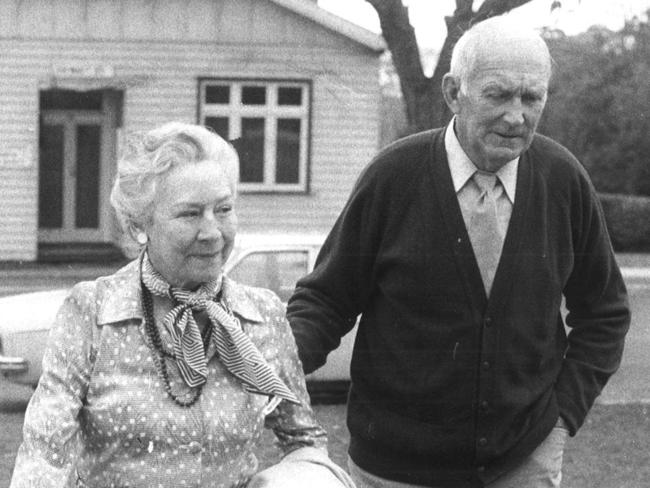
“She said that at Tullaree, Stan used to leave her and sleep with the old lady and this had upset Esme greatly.
“She said that Stan had been standing over the old lady, until she would sign some document.
“Esme said she finally signed under threats of being shot, and then suddenly disappeared.
“Esme said Stan paid two men from Melbourne the sum of $1000 to get rid of her body. She did not indicate how Margaret Clement was actually killed, but it seemed to point at Stan, having got the property, now wanted her out of the way.”
Mrs Sharp said Mr Livingstone was prone to violent outbursts and “would not hesitate in beating Esme”.
“I have seen him holding her arm up her back and pulling her hair.
“Another time I saw him holding her on the floor by his foot on her head.”
Esme Livingstone told the coroner she could not recall discussing her husband’s violence with any of the witnesses.
Under oath, Stanley Livingstone admitted having “slapped” his wife, but denied killing Ms Clement.
Coroner Mr Mason was not convinced by the Livingstones.
“I think they were, in their answers, in a number of ways, far from frank with the court,” Mr Mason said, according to Shears.
But expert opinion was divided on the bones.
Dental forensic scientist Gerald Dalitz believed they were from an elderly Aboriginal woman.
Dr Dalitz has since passed away but University of Melbourne chair of forensic odontology professor John Clement said he certain he was correct.
Professor Clement said Dr Dalitz had shown him photos of the bones.
“The photos he showed me were clearly someone who had enormous amounts of tooth wear that you never see in a European person,” Prof Clement said.
“I have looked at a lot of bones and Gerry was right in my opinion.”
He said the person had died before European settlement.
“(The bones belonged to) someone who had lived in a stone age was and had stone age wear on their teeth.”
Mr Mason at inquest returned an open finding, unable to positively identify the bones.
Mr Livingstone died a millionaire in 1993.

He had drained the swamp at Tullaree and returned it to profitability, selling it for $250,000 in 1964 — 10 times what he paid for it.
He went on to own most of Curtis Island, near Gladstone. He died of a heart attack.
His wife died a year after her husband.
And with them died possibly the last chance to solve the mystery of the Lady of the Swamp.
In the eyes of former Victoria Police Deputy Commissioner and ex-homicide squad head Paul Delianis, what happened to Ms Clement is no mystery.
During the inquest he said he strongly suggested that Mr Livingstone was behind Ms Clement’s disappearance.
“I’m quite convinced that he was the culprit. He had the motive to do it — he wanted to take over the property. There was a lot of argument and legal cases going on involving Ms Clement,” Mr Delianis said.
“We obviously didn’t have concrete evidence because we would have charged him.”
And, Mr Delianis claims, Ms Livingstone knew, but did not reveal the truth.
“He was a very violent man and a very strong individual.
“There was an incident where he was seen to lift a 44-gallon drum full of liquid and put it on the back of a truck.
“It would have been nice to have cleared it up. When you know somebody’s involved and you just can’t quite pin it on them. He was a devious old coot.”
Mr Delianis said he was convinced the bones found at Venus Bay did not belong to Ms
Clement and that her bones would probably never be uncovered.
“If they are found it will be just some stroke of luck. The chances of that happening are very, very remote.”
Mr Delianis does not believe suggestions that Ms Clement fell victim to the murky swamp water. He is sure she was murdered and buried.
“She wouldn’t drown. She was a cunning old soul as far as I could see. She was able to wade through the water and go shopping at Buffalo.”
In 2008, Victoria Police’s cold case Belier Taskforce looked into the matter again.
But no living relatives could be located and detectives could not determine if the remains are those of Ms Clement.
“Investigators have followed up all avenues of inquiry and unfortunately unless new information comes to light the case remains inactive,” Victoria Police said.

What do you think happened to Margaret Clement?
LET US KNOW IN THE COMMENTS BELOW
Originally published as From riches to rags, then death: the mystery of Gippsland’s Lady of the Swamp Margaret Clement and the footballer suspected of her murder


